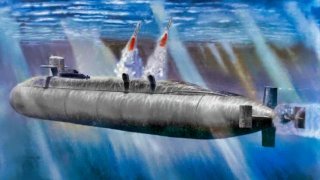Would America Survive a Nuclear First Strike?
No matter how many nuclear weapons you think the United States should have, there needs to be somebody left alive to fire them, or the number may as well be zero
For all these reasons, Congressman Bacon, a Republican, says that it is time to consider restarting either an airborne or a ground mobile alert - or both. His colleague Seth Moulton, the ranking member for strategic forces on the House Armed Services Committee (and a Democrat,) agrees. Given the facts listed above and the relatively small price of rectifying the problem, it is difficult to see why the matter should not be given urgent attention. In fact, the entire defense budget will be wasted if an enemy is able to launch a successful first strike; because in such a scenario, U.S. general purpose forces - which account for over ninety percent of expenditures - could be effectively crippled by a relatively small number of nuclear warheads. Seen in this light, a command and control system which is secure beyond reasonable doubt must be the first and overriding requirement of any rational defense policy.
Unfortunately, the Administration’s apparent complacency in this matter is not an outlier. For nearly two years now, the U.S. has refused to respond to or even properly acknowledge Russia’s abandonment of the New START Treaty, allowing Russia to pull decisively ahead of the United States in strategic nuclear weaponry for the first time in history. The United States kept a large reserve of spare nuclear warheads as a hedge against precisely this eventuality - and those warheads are still sitting in storage today.
The Administration also refused to fund the Sea Launched Cruise missile; a program intended to restore the bare minimum tactical nuclear capability which the Obama Administration unilaterally dismantled in 2010; that program was only lately saved by Congressional intervention. Meanwhile - predictably enough - both Russia and China have proceeded uninterrupted with the expansion and modernization of their own nuclear forces. By this policy of conscious self-sabotage, we have arrived at the worst of both worlds: the continually escalating war in Ukraine has sparked a nuclear crisis of unprecedented duration with Russia, just as unilateral disarmament has made America’s nuclear arsenal weaker, relative to its adversaries, than ever before. To put it simply, this is courting destruction.
Regardless, the present command and control situation cannot be reasonably justified even under the Administration’s policy of minimum deterrence. No matter how many nuclear weapons you think the United States should have, there needs to be somebody left alive to fire them, or the number may as well be zero. Failure to rectify the problem constitutes a reckless gamble; the stakes are the survival of the nation. Never in history has the United States been so hawkish abroad from a position of such deliberate, self-imposed weakness. If the gamble goes bad, it will be the American people who suffer and die as never before; so now it is up to the American people and their elected representatives to do something about it.
About the Author
Ben Ollerenshaw specializes in nuclear strategy and strategic studies in the International Security program at Macquarie University, Sydney, Australia.
Sources for this article include interviews with Congressman Don Bacon (R - NE) of the House Armed Services Committee, a former Brigadier General of the USAF; with additional comments from Congressman Seth Moulton (D - MA,) Ranking Member for Strategic Forces on the HASC, and Dr Mark Schiender, senior analyst at the National Institute for Public Policy and former Principal Director for Forces Policy at the OSD. Except where otherwise attributed, the opinions expressed in this article are those of the author.
This article was first published by RealClearDefense.


